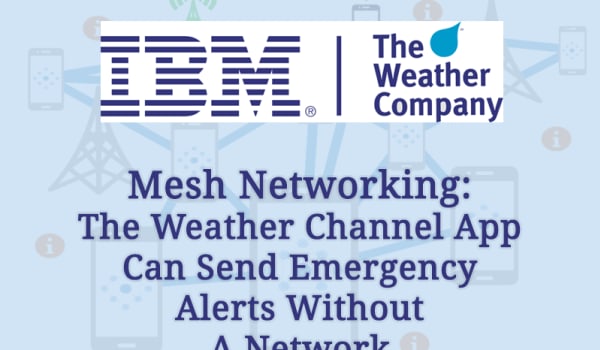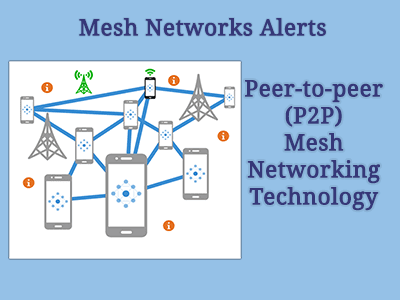
In places like India, Africa, Indonesia cellular networks are congested; connectivity is limited and when disaster like Tsunami, flood, thunderstorms, etc., occurs everything gets collapse. In these emergency situations, the lives of millions are at risk due in-ability to provide alerts and inform people. Imagine if people could get flood alert, tsunami warning even if when no network is available then millions of lives can save.
While thinking on this issue, IBM and The Weather Company has launched peer-to-peer mesh-capable The Weather Channel App in Africa, Asia and Latin America to deliver weather alerts even in areas with limited Internet or cell connection. The app can store weather data offline for up to 24 hours and offers user-selected options of whether to update on WiFi, cellular or on request.
IBM – The Weather Channel App
The Weather Channel App will use peer-to-peer connections within the mesh network to send emergency alerts to individuals via their smartphone devices. The mesh network technology links other nearby phones to extend the signal to help keep citizens connected and informed. The new version of app is now available on Google Play Store.
Mesh Network Alerts

The Mesh Networks Alerts is a peer-to-peer mesh networking technology that allows Android devices to communicate with each other without the need for Wi-Fi or cellular connectivity. The technology is beneficial for us when seconds matter in emergencies.
- The Mesh Network Alerts will provide an alerting method during disasters or severe weather and will deliver weather alerts without the internet, wifi or data connectivity.
- It work entirely within the app, using devices connected to Bluetooth or WiFi to communicate with other smartphones nearby that are not connected via data or to a cell network.
- It works off the grid in remote areas, large crowds or disaster zones, but scale is crucial. Mobile or Internet signals slow down or stop when more users overload the network, but mesh networks actually improve with more people.
Peer-to-peer (P2P) Networking
The Peer-to-peer (P2P) networking convert mobile devices into nodes within the mesh network and allow devices to talk directly to each other without using mobile tower network. Each smartphone stores the message and passes it to the next nearest smartphone, create a daisy chain to reach more devices and removes the need for a cellular network.
Bijan Davari, IBM Fellow and vice president at IBM research, said
“The combination of the innovative Mesh Network Alerts and global reach of The Weather Channel mobile app can help deliver a new level of emergency awareness to underserved populations.”
Source: IBM
